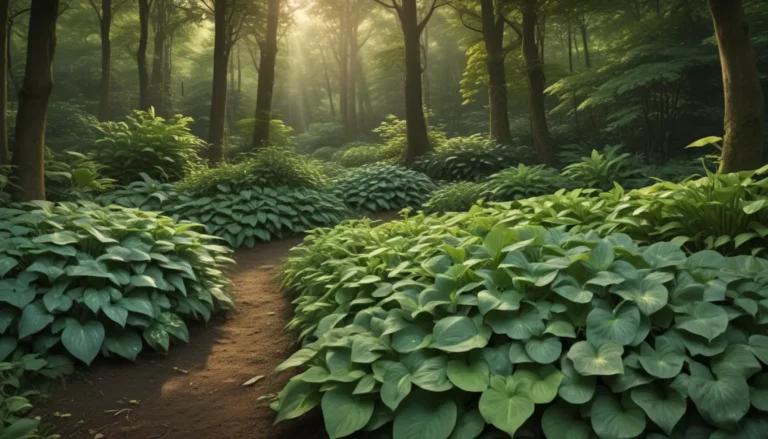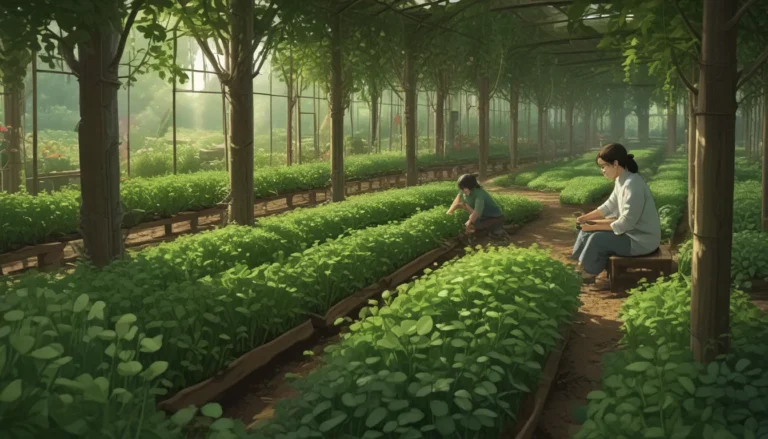The Ultimate Guide to Non-Invasive Flowering Vines for Northern Climates

Have you ever wanted to grow beautiful flowering vines in your garden without worrying about them taking over your yard like a scene from a horror movie? Well, you’re in luck! In this comprehensive guide, we will explore 11 of the best non-invasive flowering vines that are perfect for northern climates.
If you live in states like Connecticut, Illinois, Massachusetts, and New York, with cold winter conditions in USDA Hardiness Zones 3 to 6, these vines are ideal for your garden. Whether you’re looking for annuals that will fill out a space in one season or perennial favorites that provide a big floral show year after year, we’ve got you covered.
Let’s dive into the world of non-invasive flowering vines and discover the perfect additions to your garden.
Best Non-Invasive Vines for Northern Climates
- American Bittersweet
- American Wisteria
- Clematis
- Climbing Hydrangea
- Climbing Rose
- Dutchman’s Pipe
- Hops
- Morning Glory
- Periwinkle
- Purple Bell Vine
- Trumpet Honeysuckle
When choosing a non-invasive vine, it’s essential to consider your local Hardiness Zone and climate conditions. While these vines are suitable for northern states, it’s crucial to ensure that they will thrive in your specific location.
American Bittersweet
If you admire the beauty of bittersweet but prefer a non-invasive alternative, consider American bittersweet. This charming vine thrives in full sun to light shade in Zones 3 to 8, producing fragrant white flowers and clusters of red berries in the fall. Bird enthusiasts will appreciate the fruit as a delightful treat for local wildlife.
American Wisteria
American wisteria is a perennial flowering vine that dazzles with its fragrant blooms. Unlike its potentially invasive counterpart, Japanese wisteria, American wisteria is a native North American vine that offers a similar level of beauty without the risk of invasiveness. With proper care, this vine can reach up to 25 feet in length, making it a stunning addition to any garden.
Clematis
Known as the “Queen of Climbers,” clematis is a perennial flowering plant that comes in a variety of colors and bloom times. These climbing vines require pruning and maintenance to thrive, but the results are well worth the effort. Whether you prefer pure white blooms or deep magenta shades, clematis offers a versatile option for adding vertical interest to your garden.
Climbing Hydrangea
Climbing hydrangea vines are perennials that take time to establish but reward patience with stunning white blossom clusters. These vines attract pollinators to your garden and can grow up to 50 feet tall upon maturity. With proper care and pruning, climbing hydrangea vines can create a beautiful focal point in your landscape.
Climbing Rose
For classic elegance and timeless beauty, consider adding climbing roses to your garden. These stunning vines come in a range of varieties, from highly fragrant blooms to vibrant colors. While they require support to twine and grow, climbing roses can reach heights of 20 feet or more, creating a showstopping display in your garden.
Dutchman’s Pipe
Dutchman’s pipe is a unique vine native to eastern North America, known for its heart-shaped leaves and distinctive flowers. This fast-growing vine can cover unsightly walls or fences with its lush foliage and eye-catching blooms. With proper care and maintenance, Dutchman’s pipe can reach up to 30 feet in length, adding a touch of whimsy to your outdoor space.
Hops
While not your traditional flowering vine, hops offer a unique option for gardeners looking for something different. These vigorous vines can grow up to a foot a day and over 20 feet long, providing quick coverage for fences or patios. With attractive cone-like flowers and North American native varieties available, hops add a touch of whimsy and charm to any garden.
Morning Glory
Morning glories are annual flowering plants that self-sow to return each year, delighting gardeners with their vibrant blue blossoms. These versatile vines can grow up to 10 feet in length, creating a privacy screen or trailing over arbor structures. While they can be invasive in certain regions, morning glories are well-behaved in northern climates, making them a popular choice for gardeners in the Midwest and eastern US.
Periwinkle
Vinca, also known as periwinkle or creeping myrtle, is a versatile vine that can be grown as a ground cover or a short vine. With evergreen foliage and long-lasting purple flowers, periwinkle is a reliable option for covering retaining walls or fences. Tolerant of both full sun and full shade, periwinkle is an excellent choice for gardens in Zones 4 to 9.
Purple Bell Vine
Purple bell vine is a tender perennial that thrives in warmer climates but can be enjoyed as an annual in colder regions. With rapid growth and abundant purple bell-shaped flowers, this vine adds a pop of color to any garden. While it may not survive a hard frost, purple bell vine is a versatile option for adding vertical interest to your outdoor space.
Trumpet Honeysuckle
Native to North America, trumpet honeysuckle is a perennial flowering vine that attracts pollinators with its vibrant crimson flowers. Unlike its invasive counterpart, Japanese honeysuckle, trumpet honeysuckle is a well-behaved option for northern cottage gardens. With proper care and maintenance, this vine can grow up to 15 feet tall, making it an ideal choice for small yards.
Climbing with Confidence: Choosing the Right Vine for Your Garden
Selecting the perfect flowering vine for your garden is a decision that requires thoughtful consideration. While many vines offer beauty and versatility, it’s essential to choose a non-invasive species that will thrive in your specific climate and growing conditions. By exploring the diverse options available, you can find the perfect vine to enhance your outdoor space without worries of invasiveness or overgrowth.
Which of these non-invasive flowering vines is your favorite? Do you have any other recommendations to share with fellow gardeners? Let us know in the comments below!





